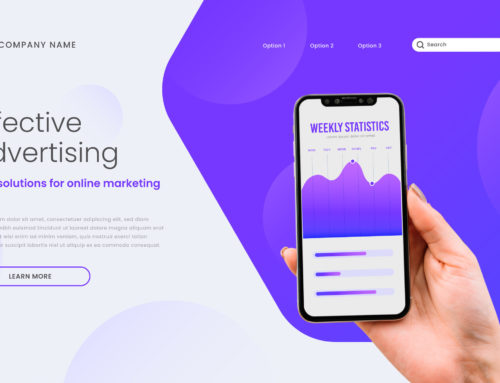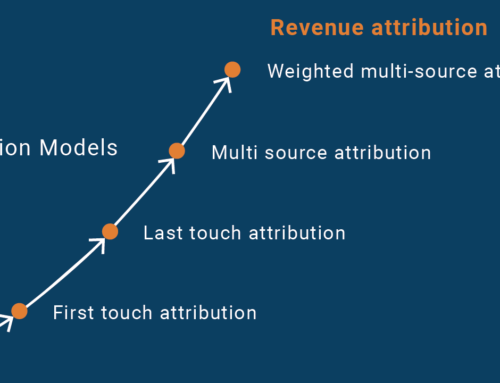Customer loyalty is an important metric of your business’ success. It gives you insight into issues ranging from whether you’re serving the right customers, to the quality of your products, to the level of your customer service. Loyal customers also have the potential to dramatically increase your profits over time. But loyal customers don’t just happen; they’re cultivated as part of a conscious process that’s built into your business’ DNA.
It’s up to you to use all the tools at your disposal to make this happen. Social media has opened new channels of communication, while also raising the bar on accountability for businesses. Here’s how to make the most of this opportunity, by applying good data analytics and testing models, and avoiding common social media pitfalls.

Photo Credit: Robert S. Donovan via Compfight cc
Quantifying the Value of Customer Loyalty
To justify an ongoing investment in a customer loyalty program, it helps to understand the real value of customer retention to company’s bottom line. There are two factors that matter in customer economics: the cost of acquiring a new customer (CAC) and that customer’s lifetime potential value (LTV).
There is a cost associated with each new customer you bring in. Calculate this cost by adding your sales and marketing expenses, along with any relevant overhead (such as salaries). Divide that total by the number of new customers you got during the period. If your total sales, marketing, and overhead is $100,000 for the year and you acquired 100 new customers, your customer acquisition cost is $1000 per customer.
By itself, this number doesn’t tell you a lot. It’s also important to look at the lifetime value of a customer to understand each person’s profit potential. This data point shows you the dollar amount that it takes you to “break even” on your acquisition investments and move into profit. In other words, how much do customers typically spend – initially and as part of an ongoing relationship with you? To get to your customer LTV, the simplest equation is the following.
Multiply the average length of customer loyalty in months or years x the number of purchases made x the average cost of each transaction. So for example, if your customers typically spend $1000 on a monthly basis for 1 year, your equation is 12 x 1 x $1000, or a lifetime customer value of $12000. If your acquisition costs are $1000 as projected above, your profit is $11000 per customer.
Armed with this information, you can quickly see why proactively retaining your customers – instead of having to develop a constant stream of new leads – moves your business to a new level of profit.
The Relationship between Customer Loyalty and Social Media Marketing
For many businesses, the value of a customer relationship is actually not quantified. Marketing is done in the absence of this important data that can help you quickly calculate ROI. We’re focused on a constant stream of new leads, as opposed to understanding the inherent value of developing relationships that last. As a result, it’s hard to know whether or not there’s an actual positive return that’s happening on marketing activities. This is especially true with social media marketing, where the idea of low barriers to entry and inexpensive interactions lull many businesses into thinking there’s zero investment required. While this is untrue, it’s important to remember that social media may be one of your most effective mechanisms for increasing customer loyalty both early on in the relationship and throughout the life of your association. Here is a closer look at some techniques that work.
Strategies for Increasing Customer Loyalty through Social Media
1. Focus on providing value and information: One of the best ways to increase customer loyalty is to become a valued informational resource. If people trust and rely on you to provide them with high quality information and insightful commentary, your relationship deepens over time. People are always looking for opportunities to learn about topics that interest them and to solve their most painful problems. Create or share information that makes them more efficient or effective, and they’ll be with you forever. Use your social media channels as a way to disseminate that information to customers and prospective customers, to get additional marketing leverage from these efforts.
2. Provide stellar customer service – especially on problems: According to Forbes, 71% of customers that leave a business do so after a bad customer service experience. Social media has opened up a whole different means for customers to share their dissatisfaction. Consider how many airlines have faced customers publicly complaining about lost luggage, flight delays, and more. A key to customer satisfaction is to avoid getting to that point in the first place with generous return policies and timely responses to questions and concerns. If an issue does arise on social media, acknowledge it, apologize, and address it as quickly as possible. Don’t get defensive and don’t shift the blame. But the most important takeaway on customer service is that it needs to be a central focus for both your business and your long-term retention policy.
3. Leverage endowed progress: Derek Halpern of Social Triggers recently shared a fascinating concept: endowed progress. Consider these two scenarios: two businesses offer loyalty cards to their customers. The first gives a free service after 8 purchases. The second gives a free service after 10 purchases – but offers customers a head start with 2 “free purchases”. Net-net, customers have to take the same action by buying something 8 times. Yet in a study by two consumer researchers, the second approach increased customer loyalty by 82%. Putting this into action is simple: set a goal, be clear about what action you want to reward (e.g. purchases or referrals), and include a “head start” as a bonus.
4. Educate your customers on your products or services: Nothing is more frustrating to customers than confusion over how to use your product. Many customer retention issues can be avoided by proactively offering resources to help customers navigate your product immediately after they buy it. Guides and video tutorials are one level of support; another is offering training services or consultations after a purchase. Work with your customers to find out what level of support they really need; it may not be as high as you think.
5. Focus on your most valuable customers: Another strategy for increasing customer loyalty is making sure that you’re focusing energy and resources on retaining your best customers. Determining your best customers may be a financial process: what customers yield the highest lifetime value for your business? In other cases, it may be focused on customers that are less profitable but more consistent in their purchases; those that are very easy to serve (they make a purchase and rarely complain); or those that act as brand ambassadors and promote your products.
However you define your best customers, develop clear criteria on who they are (e.g. demographics, psychographics, and purchase behaviors) so you can recognize them in your existing customer base and among your future leads. Make sure that your business is optimized to serve them, and focus your social media efforts on the places they spend time.
Investing in customer loyalty can reap real rewards for your business. Social media and other digital mediums give you another way to solidify your connection and make sure that customer satisfaction remains high.
What other strategies do you use to keep your customers loyal? What companies are currently doing innovative things to promote customer retention? Please let us know in the comments.






